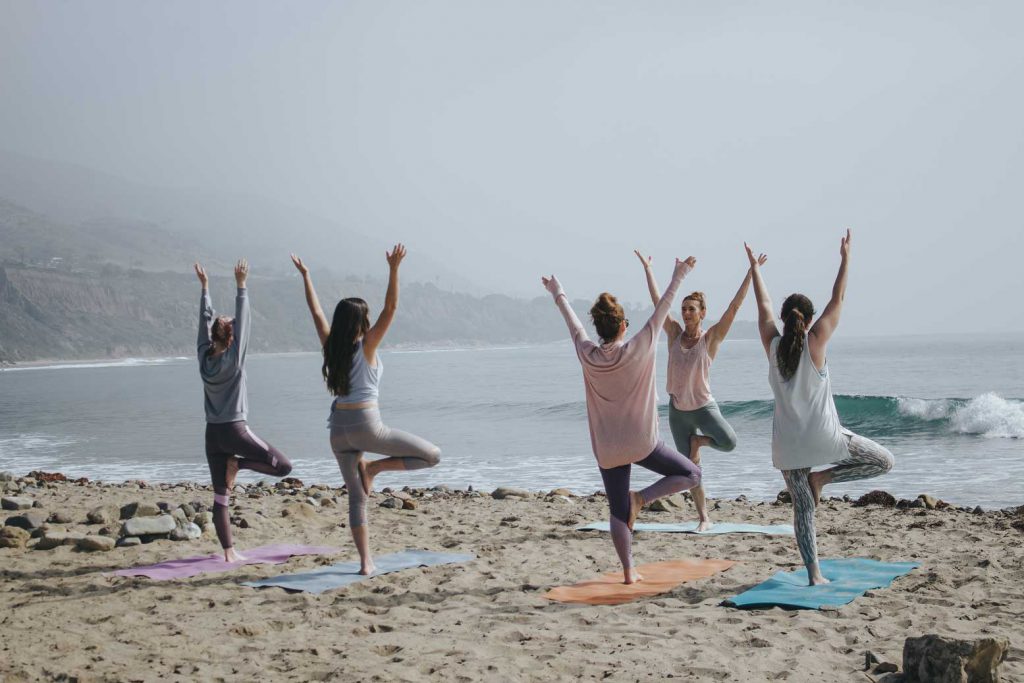What is yoga?

Yoga is an ancient exercise that focuses on strength, flexibility and breathing to promote physical and mental well-being. The main components of yoga are poses. To clarify, it is a series of movements designed to increase strength, flexibility and breathing.
This practice originated in India 5,000 years ago and has been followed in many ways in other countries. Yoga is now common in leisure centers, health clubs, schools, hospitals and surgeries.
Yoga Health Benefits
Dozens of scientific tests of various quality have been published on yoga.
While there is scope for more rigorous studies on its health benefits, most studies suggest that yoga is a safe and effective way to increase physical activity, especially strength, flexibility and balance.
There is some evidence that regular yoga practice is beneficial for people with high blood pressure, heart disease, aches and pains, including low back pain – depression and stress.
Does yoga count towards my 150 minutes of activity?
According to government guidelines, most types of yoga are not enough to move your 150 minutes towards moderate activity.
However, yoga is considered a vigorous exercise and at least 2 sessions per week can help you receive guidelines on muscle strengthening activities.
Activities such as yoga and tai chi are also recommended for adults to help improve balance and coordination.
Yoga helps to prevent falls
Yoga improves the balance of your lower body – especially by strengthening your ankles and knees – which reduces your chances of falling.
However, falls can sometimes be caused by health conditions, in which case it is best to see your GP or visit the falls Clinic at a local hospital.
Can yoga help with athritis?
Yoga is known for its gentle way of promoting comfort and strength among those with arthritis.
Some research suggests that yoga can reduce pain and mobility problems in people with osteoarthritis of the knee.
However, some yoga poses are not suitable for those with a circulatory condition.
Find a teacher who understands arthritis and can adapt movements to your individual needs, especially if you have alternative joints, and always check with your doctor or physiotherapist to see if there are movements.
The right age for yoga
People often start yoga in their 70s, hence most of them wish they started earlier. Luckily, there are yoga classes for those of all ages.
Yoga is a form of exercise that you can enjoy anytime from childhood to your older years.
Is yoga only for the fit?
No. You can join a class that suits your fitness level.
For example, to join a mixed-strength yoga class, for instance, you need to be able to get up and down from the floor.
Some yoga classes are chair based.
Yoga Injuries
Yoga-related injuries are uncommon. Straining or overstretching repeatedly can cause some injuries.
For instance, yoga is on par with any other exercise discipline – it is completely safe if taught properly by those who understand and experience it.
It is a good idea to learn from a qualified yoga teacher and choose the appropriate class for your level.
Yoga styles
There are many different yoga styles like Ashtanga, Iyengar and Sivananda. Therefore, some styles have more power than others,while others may have different significance, such as posture or breathing. Many yoga teachers develop their practice by studying more than one style. But most importantly, no style is necessarily better or more authentic than the other. The important thing is to choose a class that suits your fitness level.
Yoga classe
Classes may vary in duration, but are usually between 45 and 90 minutes. A longer class will give you more time to learn breathing and relaxation techniques and give the teacher time to work to your personal potential. It is a good idea to talk to the teacher about their point of view before signing up for class.
